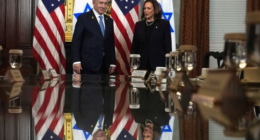You must be aware that the G20 was recently held in India in the capital city of New Delhi and it is also worth noting that everything went very well at the Summit and the Indian Prime Minister is hailed for bringing consensus of all parties to release a joint declaration. However, one of the bigger news out of the G20 Summit was that the UAE and India along with other Middle Eastern countries are planning a trade corridor and the plan was revealed at the Summit which includes both road and waterways.
Now, ever since this trade plan was released, Turkey has been pissed that they were not included in this trade corridor and India has its own reasons not to include Turkey in its plans and they also know about the same. This is the reason why Turkey is now proposing a new trade corridor plan which obviously goes through Turkey. As per the article in FT, this trade corridor “would transport goods from the subcontinent through the United Arab Emirates, Saudi Arabia, Jordan and Israel to European markets. The mooted corridor, backed by the US and EU as they attempt to repel China’s growing influence, would completely bypass Turkey”.
Showing his arrogance, the Turkish President said after the G20 that “there can be no corridor without Turkey” and also added that “most appropriate route for trade from east to west must pass through Turkey”. Turkey has now proposed a new route for the trade corridor which is named as the Iraq Development Road Initiative that will pass through Baghdad, Iraq’s Capital. However, some question the plans by Turkey saying that “Turkey lacks the financing to realise the full scope of the project, and seems to be counting on UAE and Qatari support to build the proposed infrastructure,” and also say that “For that to happen, the Gulf states would need to be convinced of good returns on investment — something that is not imminently evident with the [Development Road] project.” Since the route is passing from Iraq, experts also say that there are “issues around security and stability that threaten both construction and the long-term feasibility of the project”.









